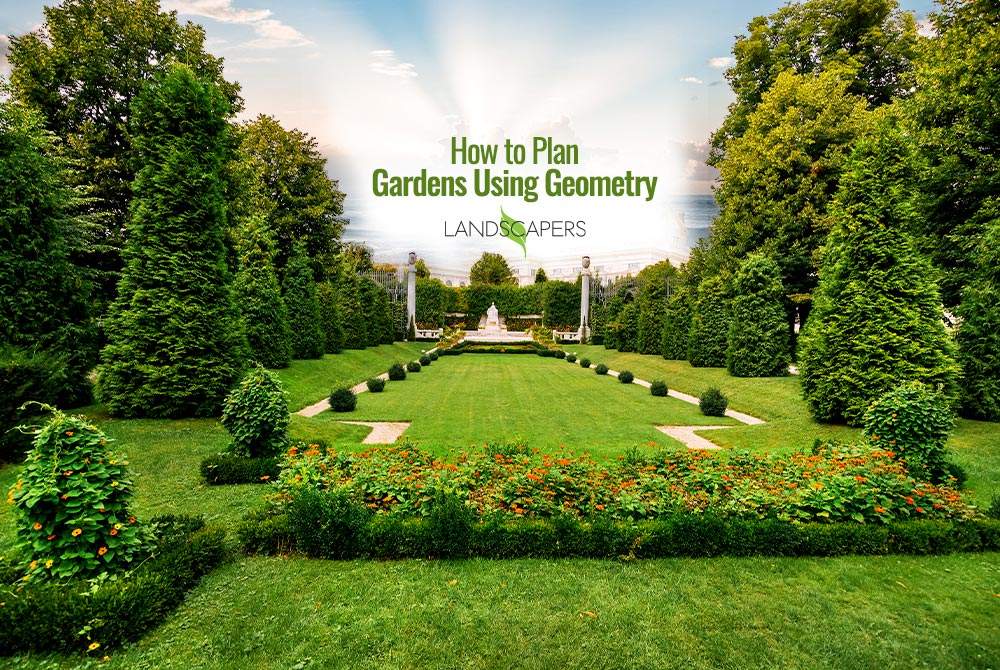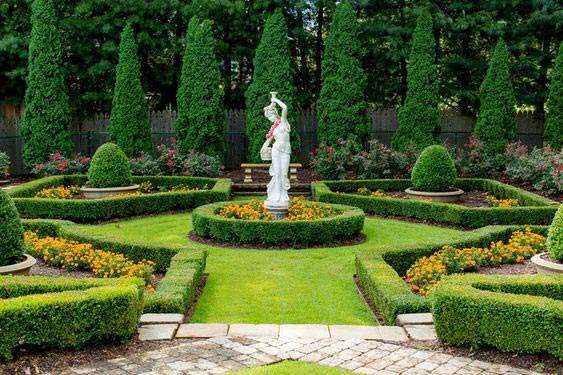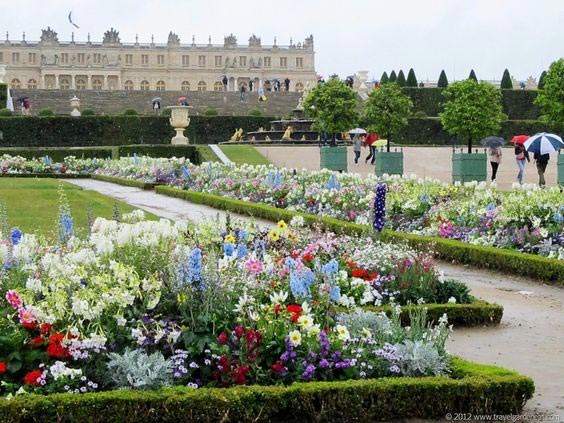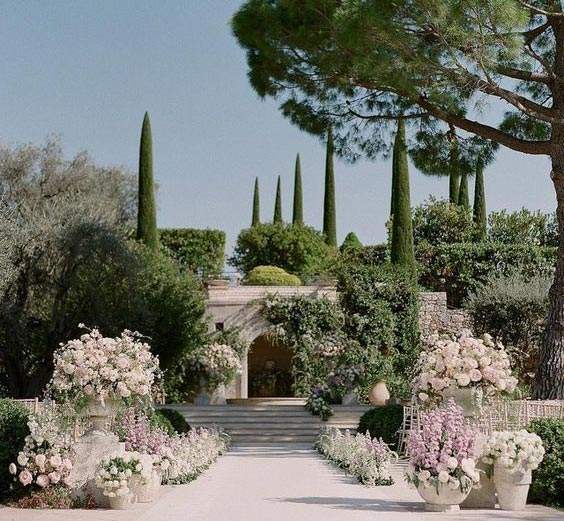
How to Plan Gardens Using Geometry
From time immemorial, geometry has been used to create strong, sustainable and beautiful structures, especially gardens. If you look at the magnificent garden of Versailles or the scenic gardens at Fontainebleau, you will see—at their core—they are rooted in solid design principles and good old geometry. By using geometry, you can give your garden a balanced and beautiful look and create a symmetrical shape that combines functionality and aesthetics together.
What is a Geometric Garden?
The architectural style of geometric garden reflects the classical architecture found in Greece and Italy. According to Amjad Almusaed, author of the book, Landscape Architecture – The Sense of Places, Models and Application, “one of the main features of the geometric garden is the regular lines of plants, arranged in symmetrical sites and geometric designs.”

The prominent feature of a geometric garden is the accuracy and symmetry of the lines and formation. Flower plantations, lawns, roads and water pools—all are arranged in certain geometric shapes, surrounded by cropped or low-trimmed hedges. When geometry is used in a garden, you get a sense of organization and order along with a symmetrical layout.
Geometric Garden is characterized by different architectural elements such as sculptures, fountains, sundials etc. and symmetry in geometric garden is achieved by having such architectural elements, which can be considered as a focal point.

Using geometry in gardens may sound like a complex concept. It is not that much difficult to implement if you are well-aware of the basics. The basic principles of geometric garden are discussed in details below.
Understand Your Space
Every beautiful garden starts with an understanding of the available space. The geometry of your garden plan will largely be dictated by the size, shape, and orientation of your plot. Begin by accurately measuring the length, width, and potentially height (if you’re dealing with slopes) of your garden area.
Note the directions of the cardinal points—north, south, east, and west—since these will impact sunlight exposure, an important factor in plant health. Sketch these initial measurements and directions on a piece of paper or a digital tool to form the basis of your garden plan.
When planning the layout of your garden, various geometric patterns can serve as the foundation for a visually appealing design.
Grid Layout
The grid layout is based on a series of parallel lines intersecting at right angles. It provides a structured and organized look to the garden. Utilize pathways, raised beds, or hedgerows to create a grid-like pattern.
Circular Design
Circular or radial designs create a focal point or central axis from which other elements radiate. This design is often employed in formal gardens and can be achieved by incorporating a circular lawn, a central water feature, or a focal planting bed.

Triangular Arrangement
Triangular arrangements are visually dynamic and create a sense of movement. Use triangular beds or groupings of plants to guide the eye through the garden, leading visitors to different areas of interest.
Make Use of Geometric Elements
To enhance the geometric design of your garden, consider incorporating specific elements that complement the chosen patterns:
Pathways
Pathways can be straight, curvilinear, or even zigzag, depending on the desired effect. They provide structure and guidance, leading visitors through the garden. Straight pathways work well in formal designs, while curvilinear paths add a sense of intrigue and exploration.
Planting Beds and Borders
Create geometrically shaped planting beds or borders using hedges, raised beds, or low-growing plants. Rectangular, circular, or triangular shapes can be used to create strong visual impact and define different garden areas.

Water Features
Incorporate geometric-shaped water features such as rectangular ponds, square-shaped fountains, or circular reflecting pools. These elements not only add aesthetic appeal but also contribute to the overall balance and tranquility of the garden.
Hardscape Elements
Integrate hardscape elements, such as paving stones, walls, or pergolas, that follow geometric patterns. These structures can serve as focal points or create visual boundaries, enhancing the geometry of the garden.
Plant Selection and Arrangement
When selecting and arranging plants in a geometrically inspired garden, consider the following tips.
Shape and Form
Choose plants with distinct shapes and forms that complement the geometric patterns in your design. For example, columnar or conical-shaped trees can enhance vertical elements, while round or mounded shrubs can soften sharp angles.

Color and Texture
Play with colors and textures to create visual interest within the geometric framework. Use contrasting or complementary colors strategically to highlight specific areas or create focal points.
Pruning and Maintenance
Regular pruning and maintenance are essential to maintain the geometric integrity of the garden. Trim hedges and topiaries to maintain their shapes and remove any overgrowth that might disrupt the geometric patterns.

Lastly, remember to strike a balance between structure and creativity. Let your garden reflect your personal style while embracing the timeless elegance of geometric patterns. With careful planning and attention to detail, your geometrically inspired garden will become a captivating sanctuary for both you and your visitors to enjoy.

